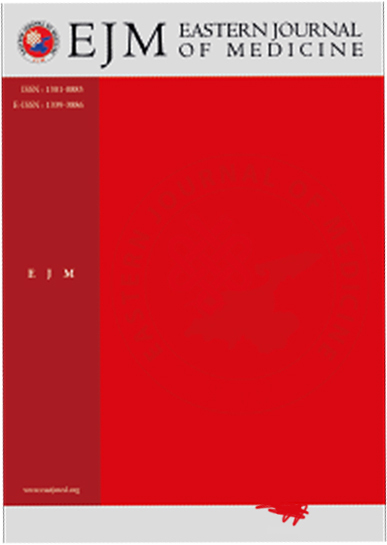Post-Void Residual Urine Volume: Potential Recurrence Risk Factor for Bladder Cancer among the Male Smoker Patients
Abdullah Gul1, Mehmet Gokhan Culha2, Omer Onur Cakir31Department of Urology, The Ministry Of Health, University of Health Sciences, Van Education and Research Hospital, Van, Turkey2Department of Urology, The Ministry Of Health, University of Health Sciences, Istanbul Training and Research Hospital, Istanbul, Turkey
3Department of Urology, The Ministry Of Health, University of Health Sciences, Bagcilar Training and Research Hospital, Istanbul, Turkey
INTRODUCTION: Aromatic amines and polycyclic aromatic hydrocarbons are chemical carcinogens that stimulate urothelial cell dysplasia and result in bladder cancer. Bladder outlet obstruction due to BPH may increase the contact time of any potential carcinogens in the urine to the bladder urothelium. We aimed to compare the post-void residual (PVR) urine volume between recurrent and nonrecurrent non-muscle invasive bladder cancer (NMIBC) patients with concomitant lower urinary tract symptoms (LUTS).
METHODS: A total of 480 patients with NMIBC were operated at our institution between May 2014 and May 2018. Of these patients, 93 men with concomitant LUTS were identified. After excluding 40 men who quitted smoking, 53 smoker men were included in study. Patient age, smoking habits, grade and stage of tumor, risk group of the tumor were recorded along with presence of recurrence. PVR urine volume was compared between patients with recurrent and nonrecurrent NMIBC.
RESULTS: The mean age was similar between patients with recurrent (n=17) and nonrecurrent (n=36) NMIBC (p = 0.475). The amount of smoking (pack year) was not different between the two groups (p = 0.407). The grade and stage of tumors were also statistically insignificant in both groups. Mean PVR urine volume was higher in patients with recurrent (88 mL) compared to nonrecurrent(62 mL) group. However, these results were not statistically significant (p = 0.548).
DISCUSSION AND CONCLUSION: We believe that the lower PVR urine volume, the lower risk for bladder cancer recurrence, although we couldn't prove this hypothesis statistically. Further clinical studies are needed to confirm the relationship between those.
Manuscript Language: English














